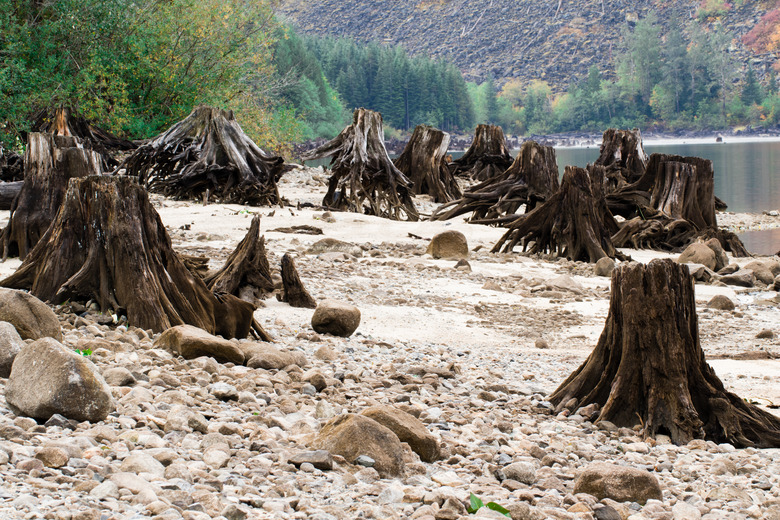Limiting Factors In The Ecosystem
Ecosystems represent communities of plants and animals in a specific region that contain both abiotic and biotic elements to help it succeed and thrive. Abiotic refers to the non-living elements in these ecological communities, such as water and air, and other chemical influencers like climate and pH. Biotic defines all the living bacteria, plants and animals within it. Because an ecosystem relies on a set of complex conditions to help it succeed, like the availability of food and water, any issue at its lowest minimum or highest limit represents a limiting factor to the community.
TL;DR (Too Long; Didn't Read)
Limiting factors of an ecosystem include disease, severe climate and weather changes, predator-prey relationships, commercial development, environmental pollution and more. An excess or depletion of any one of these limiting factors can degrade and even destroy a habitat.
Drought, Floods and Climate
Drought,
Floods and Climate
It doesn't take an advanced education to know that an area under a consistent drought fails to thrive. Climate change and rising temperatures around the globe are both limiting factors for all ecosystems, including those in which humans live, because they affect the ability of the community to thrive and succeed. When the climate changes drastically, and is not part of an ecosystem's natural rhythmic cycles, it becomes a factor that limits or can even destroy the ecosystem.
Predator-Prey Relationships
Predator-Prey
Relationships
The natural cycle of life in an ecosystem requires a balance between the living and non-living elements within it. When the balance no longer exists, it becomes a limiting factor on the community. Take for example, the predator-prey relationship. Predators that exist within an ecosystem keep the prey from overpopulating, and this maintains the balance. But if an outside agent removes the predators in the community, like human hunters killing off wolves or mountain lions, the prey overpopulates and affects the availability of the food within the community.
Human Encroachment and Pollution
Human
Encroachment and Pollution
Human encroachment and pollution not only change an ecosystem, in some cases, they can destroy it entirely. In 1970, Congress adopted the National Environmental Policy Act to protect the environment, and a few years later, they authorized the formation of the Environmental Protection Agency to enforce its regulations, laws and policies.
These regulations are in place to protect the environment and threatened species against the threat of extinction because of development or pollution. Clean air, clean soil and clean water are all necessary for the living parts within an ecological community to thrive. Removal of these laws and changes in policy can lead to destruction of the very elements that make the world, and its varied ecosystems, a thriving blue marble in space.
Cite This Article
MLA
Brenner, Laurie. "Limiting Factors In The Ecosystem" sciencing.com, https://www.sciencing.com/limiting-factors-ecosystem-5457105/. 11 April 2018.
APA
Brenner, Laurie. (2018, April 11). Limiting Factors In The Ecosystem. sciencing.com. Retrieved from https://www.sciencing.com/limiting-factors-ecosystem-5457105/
Chicago
Brenner, Laurie. Limiting Factors In The Ecosystem last modified August 30, 2022. https://www.sciencing.com/limiting-factors-ecosystem-5457105/
